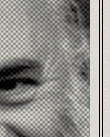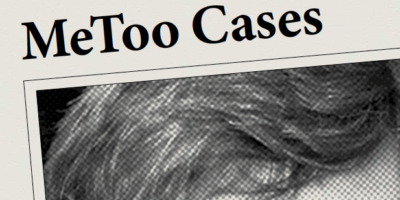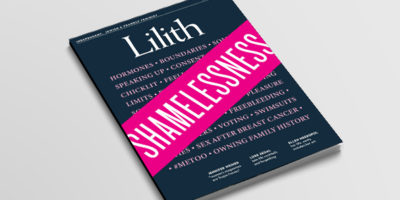
#MeToo in the Media
How Should We Understand the Stories We Read? Sarah Blustain Has Suggestions.
The hashtag #MeToo has spurred people of goodwill to circulate a powerful injunction: “Believe Women.” It’s a course correction for ages-old legal and journalistic systems in which claims of sexual harassment and assault routinely fell apart facing an impossible burden of proof.
But in the era of “Believe Women,” how do we differentiate who or what to believe? And when we read accounts in the press, how do we know which are valid? The idea of “Trust, but verify” seems pretty old-school. But still, as a feminist and editor who sometimes handles these kinds of difficult stories, I find that’s what it boils down to. #MeToo taught journalists—and the world—to move toward the trust. But without the verify? Well, then you have a disaster like Rolling Stone’s. (Remember? A concocted tale of gang rape on campus where the primary source turned out to have duped the reporter, leading to a string of lawsuits against the reporter and the magazine.)
For journalists, putting together a legitimate (and lawsuit-proof ) #MeToo claim is a complex process. You start with a woman who has been hurt, and then disbelieved or dismissed in an unequal power dynamic. But that’s just the beginning. Doing our job well means finding enough credible witnesses, documentary corroboration, and patterns of behavior that that we get to a more stable understanding of what happened than he-said/ she-said.
And for readers of #MeToo journalism who are trying to assess what they read, it probably helps to understand the guidelines behind the headlines:
Why focus on alleged perpetrators who are public figures? The distinction of public vs. private is a critical one for how journalists cover #MeToo allegations. A president (to be purely hypothetical) is obviously fair game. Same goes for the head of a media company, a TV personality, etc. But what about a reporter who is known to the public mostly just as a byline, if known at all? Is he or she a “public figure,” or a private one for whom journalists are required to erect a higher standard of privacy? Focusing on a public figure is more likely to ensure that the public interest is being served.
What about first-person accounts? Every first-person account should be substantiated with additional reporting. Of course #MeToo was launched not only with Weinstein-type coverage, but with unmediated Twitter, and I’m the last to argue for an elite gatekeeper to allow people to tell their own stories. The point is that journalism, when done right, can help—by marshaling tools and leverage that an individual may not have. Every little bit is useful: police complaints, court documents, diaries—anything that captures the events in some detail.
Is it fair to cover a single woman, a single incident? Many horrible assaults have happened to just one woman, just one time. But the power of #MeToo journalism came in a formula exemplified by New York magazine’s 2015 cover story about Bill Cosby; the cover that week showed 35 women who alleged that Cosby had sexually abused, assaulted or harassed them. That story was a journalistic work of art. It established the pattern that could not be denied, despite weak forensic evidence, long-expired statutes of limitations, and a massive power structure intent on suppressing that information. Of course it shouldn’t take 35 women to prove wrongdoing against a single powerful and admired man. But this approach has proven potent in accusations of rabbinic sexual abuse, where journalists’ ability to convene multiple voices has been a critical factor in the face of a community intent on silencing them.
Is “anonymous” okay? Who could fault someone for not wanting her private business in the press? And yet…for readers, a named, on-the-record accusation carries weight. She’s putting her name on the line; if she’s lying, her name will be mud. When granting anonymity, journalists need to establish (and tell readers) that there’s a good reason for doing so, for example, “for fear of retaliation” or “because she is still traumatized by the event.”
What about non-workplace allegations? I’m going to go out on a limb to say that the focus of #MeToo journalism for the most part belongs on the workplace and public figures. That’s because accountability in these stories rests not only with the wrongdoer but also with the structures that allowed him or her to continue with impunity. Think about Bill Cosby, Jeffrey Epstein, former CBS CEO Les Moonves, and on and on. Their stories were not only about assault or trafficking or workplace violations, horrible as those all are. They were also about office assistants and high-ranking executives and prosecutors and HR departments standing shoulder to shoulder to shield the accused, often for years. Readers of a journalistic #MeToo story should look not only at what it says about the powerful man, but also at how the reporting digs into the power structures around him.
Is “no comment” okay? This is maybe the most subtle but important reality check I engage in with every story. I advise the reporters I work with never to wait to the very end to seek comment from the person about whom they have an accusation. The so-called target (the alleged perpetrator) is also a potential source: he knows what happened too, and he needs to be given very fair opportunities to respond to the claims, as does every person and institution accused of protecting him. On this front, a reader should look for evidence that the reporter submitted detailed and open-minded questions that might shed the events in a different light, questions, such as “What is your understanding of what happened that night?” or “Can you walk me through your policies for handling a complaint?” Readers should be on the lookout to see if reporters made that effort—even if they got no answer. “A spokesperson refused to comment” tells a reader a lot less than “A spokesperson refused to answer questions about whether Institution X had a system in place for dealing with claims of sexual harassment.”
Thinking about all this invariably leads me back to a story Lilith published 20 years ago. A powerful rabbi. A community standing shoulder to shoulder to protect him. And women’s voices that kept emerging with long-ago claims. It was really hard, tracking down enough voices to feel sure; dealing with requests for anonymity; looking for contemporaneous evidence that anyone else knew what was going on; trying (and failing) to reach the deceased rabbi’s family for comment. There wasn’t a #MeToo movement yet. But it was a #MeToo story, reporting that established the pattern of abuse that for years before the story broke no one woman had been able to prove.
Sarah Blustain is deputy editor at the non-profit Type Investigations; she is a former senior editor at Lilith and author, in 1998, of Lilith’s article “Shlomo Carlebach’s Shadow Side.”



